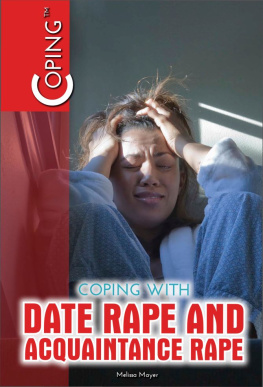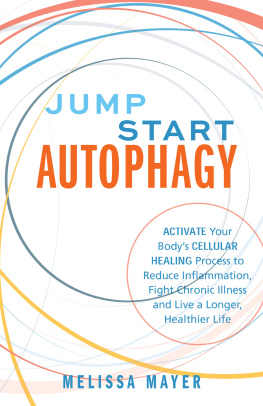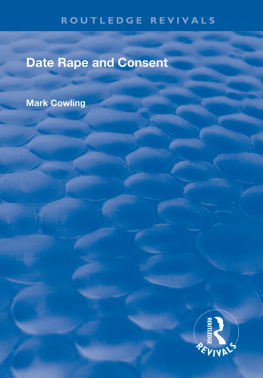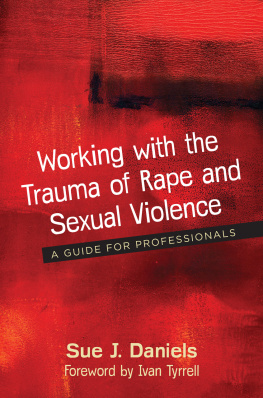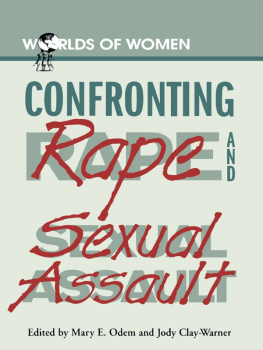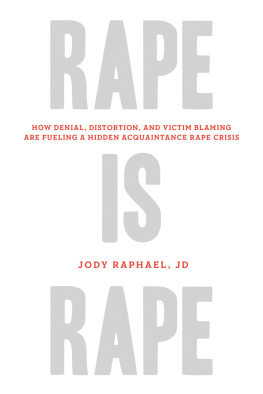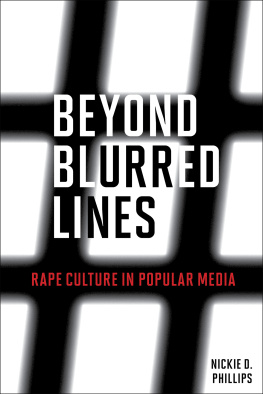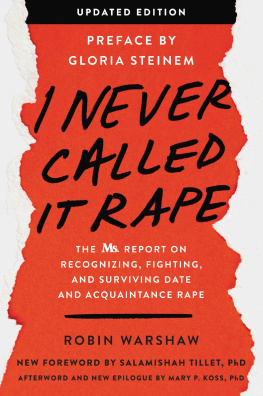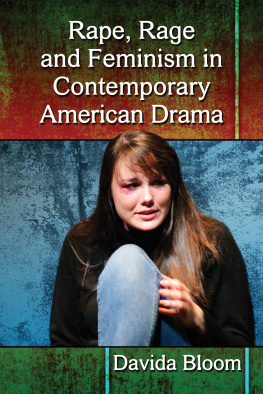Published in 2019 by The Rosen Publishing Group, Inc.
29 East 21st Street, New York, NY 10010
Copyright 2019 by The Rosen Publishing Group, Inc.
First Edition
All rights reserved. No part of this book may be reproduced in any form without permission in writing from the publisher, except by a reviewer.
Library of Congress Cataloging-in-Publication Data
Names: Mayer, Melissa, author.
Title: Coping with date rape and acquaintance rape / Melissa Mayer.
Description: New York : Rosen Publishing, 2019 | Series: Coping | Audience: Grades 7-12. | Includes bibliographical references and index.
Identifiers: LCCN 2018011714| ISBN 9781508183167 (library bound) | ISBN 9781508183150 (pbk.)
Subjects: LCSH: Date rapeJuvenile literature. | Sex crimesJuvenile literature. Classification: LCC HQ801.83 .M395 2019 | DDC 362.883dc23 LC record available at https://lccn.loc.gov/2018011714
Manufactured in the United States of America
CHAPTER ONE
What Are Date Rape and Acquaintance Rape?
CHAPTER TWO
Types of Date Rape and Acquaintance Rape
CHAPTER THREE
The Effects of Sexual Violence
CHAPTER FOUR
Understanding Rape Culture
CHAPTER FIVE
What to Do if You Are Raped
CHAPTER SIX
Responding to Sexual Violence and Rape Culture
F ew topics are as harrowing as sexual violence. In part, this is because rape is more than just run-of-the-mill violence; it is an assault on the most vulnerable, intimate self. It is also difficult to read and talk about because the statistics are so bleak; a shocking percentage of people, especially girls and women, will experience sexual assault firsthand. Certainly, over the course of a lifetime, everyone will know someone who is a survivor of sexual violence.
And yet the ubiquitous nature of sexual violence is why it is so important to read, write, and talk openly about it. At its very core, rape is not a crime centered around sexuality or desire but rather a criminal act related to power. When you experience rapeor perhaps even when you read or think about sexual violenceit can feel as if your authority over your own body, your agency, has been stolen, leaving you powerless.
Sexual violence holds power over people because of its ability to make survivors feel small and silenced. But strength comes in numbers, and many voices rising together can shatter the code of silence surrounding sexual assault and rape. By talking honestly and bravely about experiences of sexual violence and the culture that makes it possible, people can begin to name and understand rape, sexual assault, and other forms of sexual violence that are often ignored or minimized.
This is especially important when confronting sexual violence that occurs at the hands of someone you know, trust, and maybe even love. Date rape and acquaintance rape are particularly destructive because of the way they violate not only your body but also the belief that you can trust your judgment and the people closest to you. These acts can shake both your physical and emotional safety.
Learning about sexual violence serves two functions. One is to help you gain a better understanding of date rape and acquaintance rape and know what to do if you (or someone you care about) experience sexual violence firsthand. The other is an invitation to think about how outdated ideas about gender and sexuality create an environment in which date rape and acquaintance rape seem normal or even expected, creating barriers for survivors seeking justice and healing.
When talking about people who have experienced sexual violence, it is appropriate to choose empowering language, such as replacing the word victim with survivor. This is because sexual violence is about taking away someones power. Framing the discourse about rape and people who experience rape is one way to return that power where it belongs. If you have experienced sexual violence, you did not have a choice about being the victim of that crimenothing you did or didnt do caused it to happenbut you do decide every day to survive those circumstances. And that is a powerful choice.

Perhaps because sexual violence is so shocking and intimate, it is often used as a storyline in popular culture and media. Rape is such a common entertainment trope that entire series are written describing the imagined drama of investigating and prosecuting rape, and its hard to read the news without also reading about sexual violence. In part, this is because the notion of rape taps into fears, and that draws peoples attention, but it is also because sexual violence is familiar and therefore makes for plausible, relatable content. This illustrates how sexual violence is an embedded part of the cultural experienceand how easy it is to focus on the shock of the crime itself and leave out recovery, prevention, and education.
To extract the truth about sexual violence, it is necessary to get down to the bare bones of the issue: how often rape occurs and what it actually looks like.
How Common Is Rape?
According to the Rape, Abuse, and Incest National Network (RAINN), the statistics associated with sexual violence are pretty grim. RAINN reports that a sexual assault occurs in the United States every ninety-eight seconds and that one out of every six women (and one out of every thirty-three men) will experience rape or attempted rape in their lifetimes. When most people think about rape, they imagine stranger rape, but that is actually the least common type of sexual violence. Shockingly, the bulk of sexual violence (70 percent) is perpetrated by someone the survivor knows. This is known as acquaintance rape.

According to the statistics, acquaintance rape is particularly common for young adults. RAINN indicates that women who are sixteen to nineteen years old are four times more likely to experience sexual violence compared with the general population. Of the children and teens whose sexual abuse cases are reported to law enforcement, almost all of them (93 percent) were perpetrated by acquaintances or family members.
In addition to young people, people ofcolor (especially indigenous women, who are twice as likely to be raped as all other people), members of the LGBTQIA community, and people with disabilities are all more vulnerable to sexual violence. For people with a number of these identities, that risk is compounded.
The statistics arent all terrible. RAINN reports that the overall rate of rape and sexual assault fell by 63 percent between 1993 and 2014. Even so, for the individuals who experience rape, the repercussions can be life altering. Approximately 70 percent of survivors of sexual violence report moderate to severe distressmuch higher than any other violent crime. Almost all women who experience rape (94 percent) experience posttraumatic stress disorder (PTSD) symptoms immediately following the rape, and one-third even consider suicide.

